Frost Protection - UTL Repository
Frost Protection - UTL Repository
Frost Protection - UTL Repository
Create successful ePaper yourself
Turn your PDF publications into a flip-book with our unique Google optimized e-Paper software.
]<br />
F R O S T P R O T E C T I O N : F U N D A M E N T A L S , P R A C T I C E A N D E C O N O M I C S<br />
[<br />
SOIL COVERS<br />
Plastic soil covers<br />
Covering the soil directly with plastic to raise the surface temperature is a<br />
viable method that can provide some protection. This is especially true for<br />
small plantations (e.g. gardens or small orchards), where other protection<br />
methods are unavailable. Because the air temperature above the ground is<br />
related to the surface temperature, any management that raises the minimum<br />
surface temperature will provide additional protection. Often, a simple test<br />
can be used to verify the benefits of a management strategy. For example, a<br />
citrus grower once inquired about whether it was better to keep in place or<br />
remove a clear plastic cover from a newly planted orchard floor before<br />
entering the frost season. If the minimum surface temperature recorded<br />
overnight is consistently warmer for the plastic covered surface than for the<br />
uncovered surface, then it is better to leave the plastic on the soil. If the plastic<br />
covered soil has a colder minimum, then it should be removed. It was<br />
suggested to the grower to remove a small section of plastic and place a few<br />
minimum registering thermometers on the bare ground and a few on the<br />
plastic in the evening after sunset for several clear, cool nights. In fact, the test<br />
does not have to be done during subzero conditions. The grower was<br />
instructed to record the temperatures and note which surface had a colder<br />
minimum temperature. The surface with the warmer temperature is more<br />
desirable for passive protection.<br />
Although the experiments are unpublished, the authors have noted that clear<br />
plastic mulches, which increase heat transfer into the soil, typically improve soil<br />
heat storage and result in higher minimum surface temperature. Since the surface<br />
temperature is closely related to air temperature in a crop canopy, having a higher<br />
surface temperature will provide some protection. Black plastic absorbs<br />
considerable radiation, but the air space between the plastic and the ground<br />
inhibits heat transfer to the soil where the heat capacity is greater. Consequently,<br />
black plastic is less effective for frost protection.<br />
Wetting the soil before covering with plastic further improves heat storage,<br />
which raises the minimum surface temperature and provides more protection.<br />
This is especially true for clear plastic, which allows more radiant energy to reach<br />
the soil surface. Part of the reason for increased surface temperature, when the<br />
soil is wetted before placing the plastic, is that water will evaporate from the soil<br />
and it will condense on the bottom of the plastic as the cover cools to the dewpoint<br />
temperature. This will change latent to sensible heat under the plastic and<br />
it will help to maintain a warmer surface temperature.<br />
136


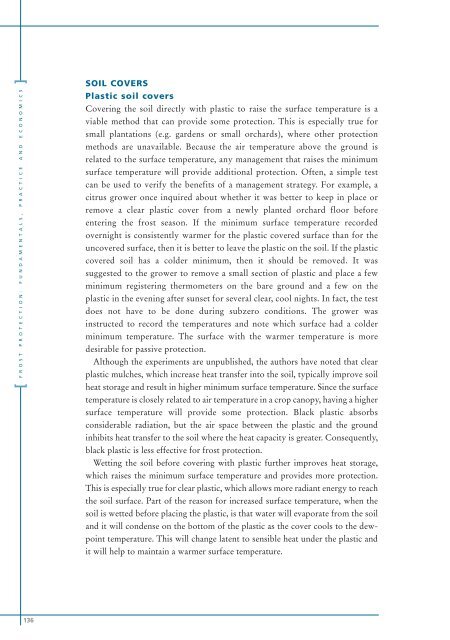
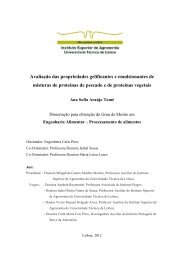
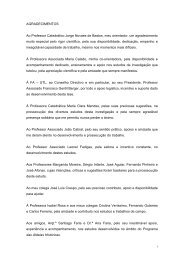

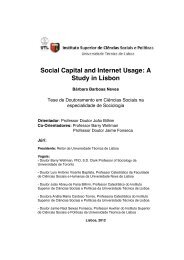
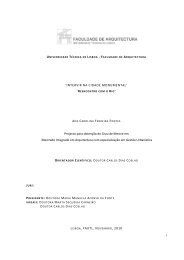
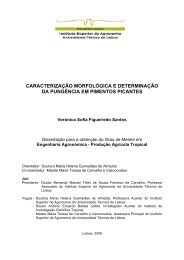

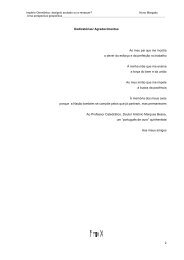

![Tese - Es..[1].pdf - UTL Repository - Universidade Técnica de Lisboa](https://img.yumpu.com/25707135/1/184x260/tese-es1pdf-utl-repository-universidade-taccnica-de-lisboa.jpg?quality=85)


